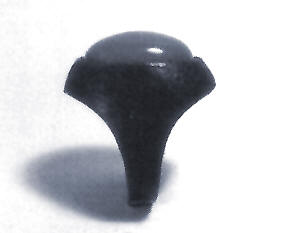Popular Textural Wax Patterns
Aside from the visual pleasure one derives from a textured surface, the biggest benefit is the ease in finishing the cast piece. No filing, no burs, no abrasive points, and no scratch removal compounds are necessary. Simply use a wire brush on the flexshaft for a soft satin finish. If a mirror finish is desired, then go on to the polishing wheel.
3 Minute Read
Aside from the visual pleasure one derives from a textured surface, the biggest benefit is the ease in finishing the cast piece. No filing, no burs, no abrasive points, and no scratch removal compounds are necessary. Simply use a wire brush on the flexshaft for a soft satin finish. If a mirror finish is desired, then go on to the polishing wheel.
This article is an English excerpts from the book "Lost Wax Jewelry Making: The Build-up Technique" by Minoru Azama, printed in Japanese by Kashiwa Hobby Books. 1999, ISBN-4905588995.
The complete edition is available from Ganoksin in a digital format for only $34.95
One of the few books available on wax modelmaking; "Lost Wax Jewelry Making: The Build-up Technique" by Minoru Azama, printed in Japanese by Kashiwa Hobby Books. 1999.
Azama process emphasizes building up wax as opposed to starting with a wax blank and carving away material. He uses this approach for organic as well as geometric subjects. The potential of this technique is unlimited!
Azama's work is outstanding, some of it so very precise and geometric that one would think it had been carved of hard wax. The book was written for students at the Japan Jewelry Academy, and Mr. Azama has been generous enough to write a complete English translation
You assume all responsibility and risk for the use of the safety resources available on or through this web page. The International Gem Society LLC does not assume any liability for the materials, information and opinions provided on, or available through, this web page. No advice or information provided by this website shall create any warranty. Reliance on such advice, information or the content of this web page is solely at your own risk, including without limitation any safety guidelines, resources or precautions, or any other information related to safety that may be available on or through this web page. The International Gem Society LLC disclaims any liability for injury, death or damages resulting from the use thereof.
The All-In-One Jewelry Making Solution At Your Fingertips
When you join the Ganoksin community, you get the tools you need to take your work to the next level.
Trusted Jewelry Making Information & Techniques
Sign up to receive the latest articles, techniques, and inspirations with our free newsletter.
